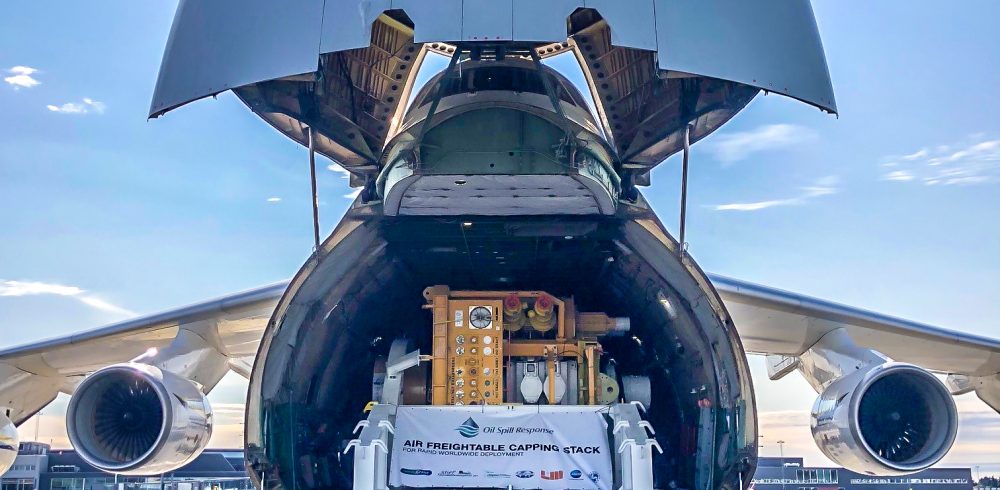A ground-breaking test flight saw ANTONOV Airlines and Chapman Freeborn Airchartering joining forces in the transportation by air, instead of by sea, of a capping stack, which is the vital equipment used by the oil industry in the event of an oil spill. This successful test flight marked the first time ever that a complete capping stack has been transported by air.
“This was a very important test flight, as this represents the first time anyone has transported a capping stack on an aircraft that would be used in the event of an oil spill emergency, enabling a much quicker response anywhere in the world,” said Martin Griffiths, Sales Manager at the UK office ANTONOV Airlines.
ANTONOV worked with charter specialist Chapman Freeborn and its client Oil Spill Response Limited (OSRL) and deployed an AN-124 to carry the fully assembled subsea capping stack and housing, which weighed a massive 85.5 tonnes and measured 11.5 by 5.5 by 3.9 metres.
The AN-124 was chosen for the flight after an extensive logistics study by Chapman Freeborn. Its ability to travel up to 5,000km with a 120-tonne payload, self-loading/off-loading capabilities, which removes the necessity for a main deck loader, and availability on the European spot market cemented the choice.
“When every minute counts, the number one priority is stopping the flow of hydrocarbons as quickly as possible. The ability to transport a fully assembled capping stack by air is a critical development for the industry,” said Chris Lund, Technical Manager for OSRL’s SWIS team.
“Sea transport remains the most likely mobilisation option for the majority of well sites, but for wells in more remote areas, this is a vital addition to our subsea capping and containment offering,” he added.
Prior to the successful 1h 23m test flight to and from Stavanger in Norway, transporting capping stack equipment by air would have meant breaking it down into multiple payloads and reassembling it at the destination, before moving it to the incident site.
Find Out More: https://www.chapman-freeborn.com/en/cargo-air-charter
















